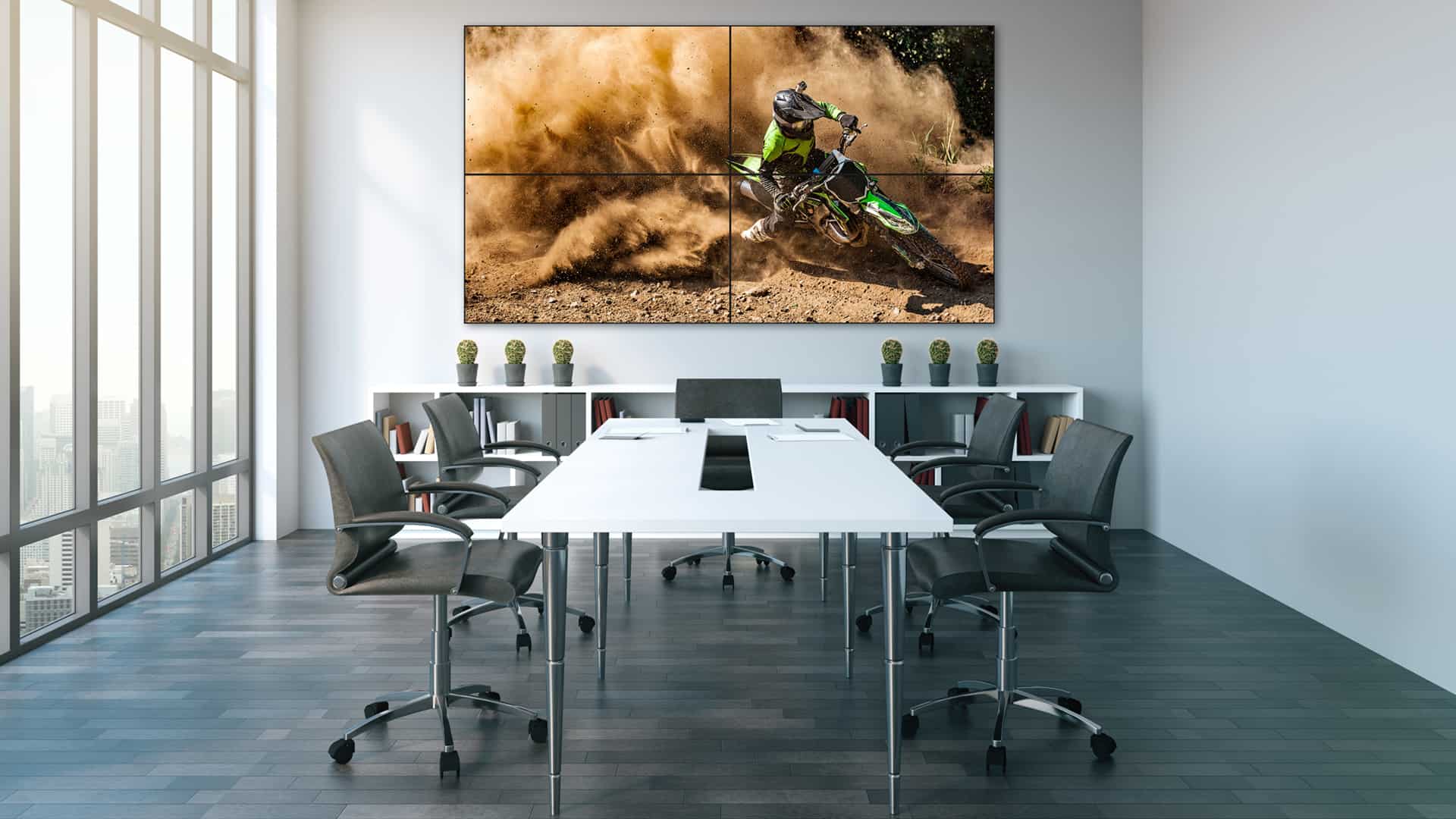Visualizing real-time intelligence and information is critical in a variety of spaces, from meeting rooms to training spaces to control rooms. These spaces need a single focal point of information that can be easily seen by everyone. We believe video walls are the best solution. Determining which video wall technology is best suited to your application is a little more complicated, however. Here are 10 considerations to keep in mind when deciding between LCD panels and LED tiles for your video wall collaboration technology.
1. Viewing Angle
The term meeting equity means creating equal experiences for meeting participants across all workspaces. These include meeting rooms, training spaces, remote work locations, and across all meeting platforms.
In today’s workplace, video has joined audio as the standard for collaboration. As a result, an equitable meeting experience has to include reliable video capabilities for every participant. To achieve true employee engagement, teams must be able to see and hear each other no matter where they are.
2. Brightness
Brightness requirements depend largely on where your video wall is located. In a meeting room with a lot of ambient light coming in through the windows, higher brightness is better. But in a control room where users will be tracking multiple feeds of content on the display screen for long shifts, higher brightness is a downside.
LED tiles offer the best performance for brightness and uniformity when it comes to a tiled array, with 97% brightness uniformity. They can also display content clearly in high ambient light environments. LCD panels typically achieve 85% to 90% brightness uniformity, but they have improved black and low-level gray contrast.
3. Contrast
Higher contrast enables easier and faster recognition of the information being displayed. It also reduces eye strain. Contrast ratios for LCD panels are typically 1500:1, but they can achieve ratios of 500,000:1 with a dynamic backlight. On the other hand, LED tiles can maximize contrast through the use of black printed circuit boards and black solder mask. The typical contrast ratio for an LED tile is 5000:1.
4. Seamlessness
Ideally, any video wall should be completely seamless, but that is not currently 100% achievable. LCD panels can minimize the transition between display screens with bezels of less than 1mm. For large video walls where viewers are at least 10 feet away, the gap between screens is negligible.
By contrast, LED tiles are designed to touch each other without increasing the distance between pixels from one tile to the next. In a typical tiled array, it is difficult to see where the tiles join from a normal viewing distance.
5. Image Quality
Every video wall looks bright and vibrant when it’s new, but how do these two options hold up over time? If color uniformity, brightness uniformity and image quality are not the highest priority for your application, LCD panels are a good and cost-effective solution.
If image quality is important at all times—for example in a 24/7 application—LED tiles are the better choice. LED tiles can provide high image quality for 5+ years.
See How Christie Makes LED Video Wall Installation Quick and Easy
6. Viewing Distance
The ideal viewing distance is the point at which the viewer can no longer distinguish individual pixels. For LED tiles, the optimal viewing distance depends on the pixel pitch you select. LCD panels, on the other hand, can achieve a pixel pitch as small as 0.37mm, making up-close viewing possible and viewing distance a non-issue.
7. Deployment
Both LCD panels and LED tiles are quite thin, often with a depth of less than 4” or 10mm. They can be installed requiring only 4-8” of space front to back, including the mount, so either option is a viable choice when space is at a premium. If you have room to be more creative, LED tiles have a slight advantage. They can be mounted along a curve, or combined to make a display of any size and shape.
8. Cost of Ownership
LCD panels have an advantage here, with a lower initial price, making it an appropriate solution for a tight budget.
9. Power Consumption
While all displays consume power and require cooling, LED tiles generally draw more power and require more HVAC than LCD panels. But there’s a catch: LED video walls also consume energy more efficiently than other display technologies. A close analysis of your specific application and collaboration technology needs will help you identify the best option.
10. Display Lifetime
In a 24/7 environment, the typical lifetime of an LCD video wall is 5 to 7 years, while the typical lifetime of a LED video wall is 11+ years.
LCD panels are more affordable than LED tiles, but you are trading longevity, image quality, and other performance attributes for that initial upfront cost savings.
Connect with Us to Choose the Best Video Wall Solution
The key to choosing the right video wall solution is mapping your specific needs for collaboration and visualization to the performance of each option. Once you’ve identified the technology that will work best for your application, you can start researching the top brands for the solution that will fit your unique needs.
AVI-SPL partners such as Christie Digital provide best-in-class video wall technology and our experts know the ins and outs of many solutions on the market today. For help identifying and meeting your video wall needs, get in touch with AVI-SPL today.

